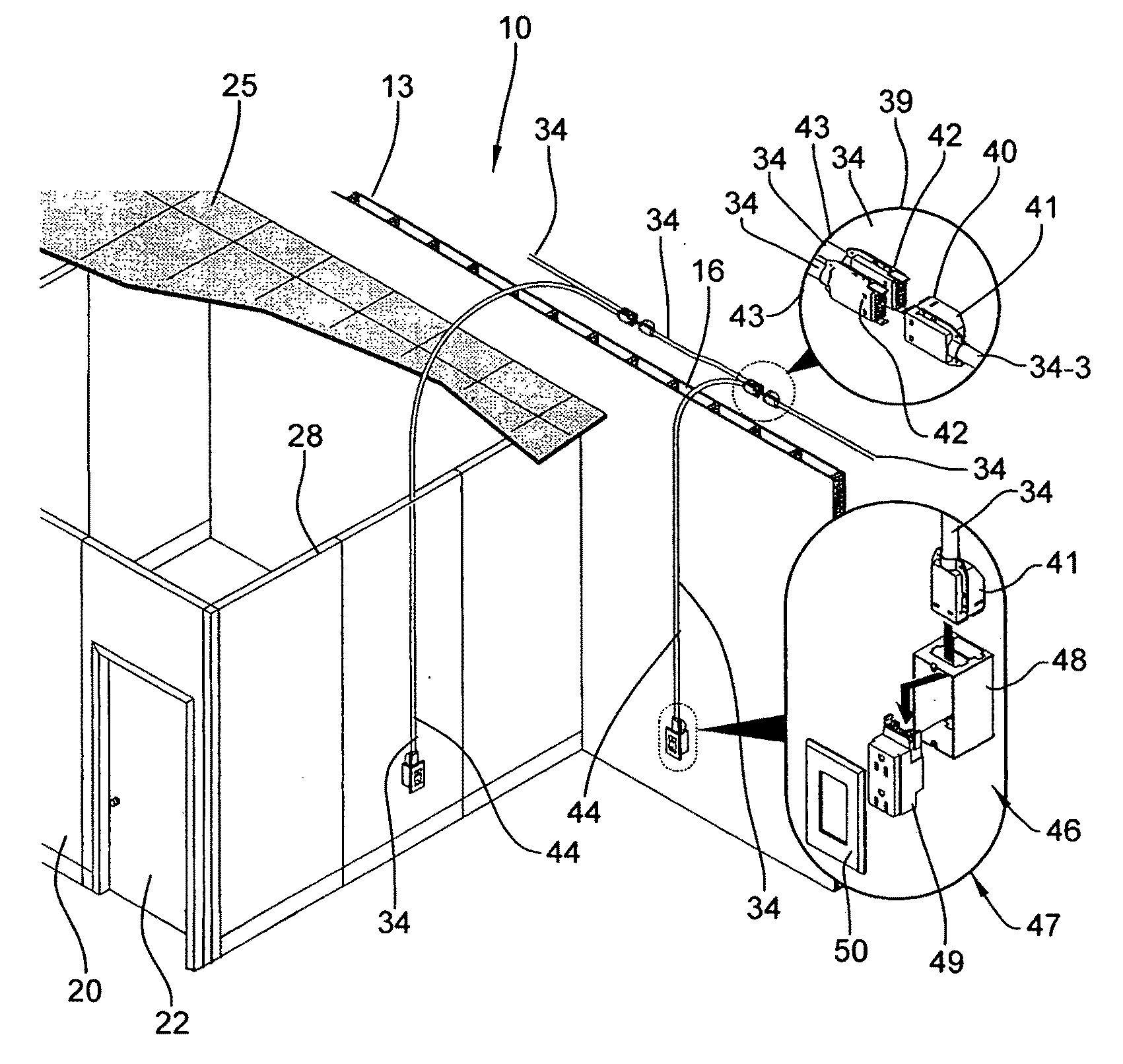Modular electrical distribution system for a building
a technology for modular electrical distribution and building, applied in the direction of substation/switching arrangement casing, connection contact member material, coupling device connection, etc., can solve the problems of incompatibility of current systems and non-residential buildings, inability to easily interconnect competing systems, and labor-intensive wiring practices
- Summary
- Abstract
- Description
- Claims
- Application Information
AI Technical Summary
Problems solved by technology
Method used
Image
Examples
Embodiment Construction
[0175]The invention relates to a universal modular electrical distribution system 10 as illustrated in various configurations in FIGS. 1A-1B and 2-4. The power distribution system 10 has various components and is readily adaptable to multiple applications in non-residential buildings and other similar structures as previously described above. While primarily developed for non-residential applications, the system also could be used in its present form or adapted, if necessary, for residential applications as the need warrants.
I. Overview
[0176]The universal power distribution system 10 of the invention overcomes disadvantages associated with the existing systems described above and is intended to be “universally” adaptable for use to not only supply power to lighting circuits, but also to building-wall receptacle circuits, modular space-dividing office furniture, raised flooring and other building structures.
[0177]Generally as to non-residential buildings, such buildings can be any co...
PUM
 Login to View More
Login to View More Abstract
Description
Claims
Application Information
 Login to View More
Login to View More - R&D
- Intellectual Property
- Life Sciences
- Materials
- Tech Scout
- Unparalleled Data Quality
- Higher Quality Content
- 60% Fewer Hallucinations
Browse by: Latest US Patents, China's latest patents, Technical Efficacy Thesaurus, Application Domain, Technology Topic, Popular Technical Reports.
© 2025 PatSnap. All rights reserved.Legal|Privacy policy|Modern Slavery Act Transparency Statement|Sitemap|About US| Contact US: help@patsnap.com



